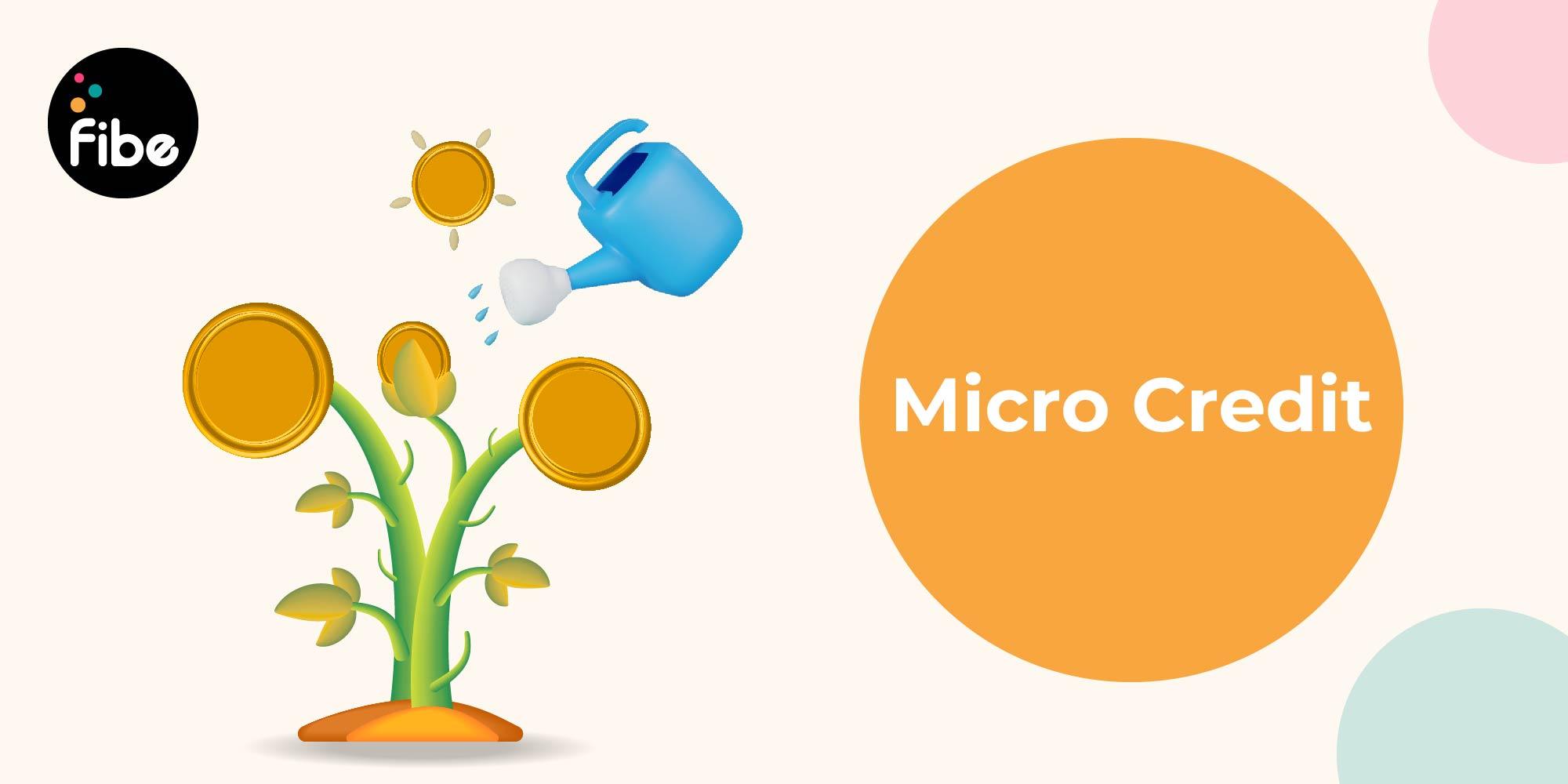Microcredit: Understand Meaning, Features, Example and more
Reviewed by: Fibe Research Team
- Updated on: 8 Nov 2023
Reviewed by: Fibe Research Team

Knowing microcredit meaning is crucial, especially if you plan to get a loan for your small business. Microcredit for businesses provides financing options that empower them to function seamlessly. With adequate funding, businesses can ensure they have enough capital to sustain and execute operations stress-free. That’s not all. This funding also helps aspiring entrepreneurs get started and launch a business.
As a financing tool, microcredit has many benefits. One of them is instant and hassle-free funding to meet unexpected business expenses. But to get the approval, you need to meet a few terms and follow adequate protocols.
Read on to learn the meaning of microcredit, its examples and its importance.
Microcredit refers to a business loan of a small amount. It offers financial support to entrepreneurs in need of short-term funding. This funding intends to aid low-income group individuals and enable them to pursue their entrepreneurial ambitions.
With the help of microcredit, individuals can work on growing their existing small businesses or use it to start a new business. Financial backing provided by microcredit can encourage individuals to realise their entrepreneurial ideas.
This initiative helps boost the country’s economy, reduce poverty and improve lifestyle. Microcredit is offered by:
Microcredit solutions are generally collateral-free. However, some instruments may require collateral. Individuals looking into getting this facility also get flexible repayment tenures and affordable interest rates.
Here are some attractive features offered by microcredit:
Eligible borrowers can become debt-free soon as the repayment period is 1-2 years.
Lenders offer microloans starting at ₹5,000. The average loan amount that most eligible borrowers apply for is usually around ₹30,000. This allows them to get small-ticket loans that do not strain their finances during repayment.
Individuals do not have to risk their personal assets as microloans are available without any need to provide security. This also helps make the loan approval process smoother and faster.
Lending institutions offer microloans to boost a borrower’s income via entrepreneurship. As such, the funding generally comes at pocket-friendly interest rates. This makes repayment easier.
Organisations that offer microcredit are mindful of borrowers’ needs. They make the process seamless by approving loan applications faster.
Since microcredit facilities do not require collateral, borrowers only need to submit basic KYC and income-related documents. This helps speed up the application process.
Based on the financial institution, individuals can repay microcredit in various convenient ways. They can choose between weekly, monthly or other structures like making a payment every 15 days.
Modern-day microcredit solutions are a key part of microfinance and have evolved to cater to the nuanced requirements of individuals and businesses. The Government of India also introduced an initiative providing microcredit to those who needed it.
Facilitated by the National Bank for Agriculture and Rural Development (NABARD), the government’s microcredit program has helped many from economically weaker sections get access to financing solutions to either set up or expand their businesses.
Leading financial institutions also offer such services and have simplified access down to a few clicks. Digitisation has empowered this shift, enabling seamless access across the nation.
Microcredit provides numerous benefits to the borrowers, as well as the economy as a whole. With various types of microcredit options available, you can choose one based on your requirements. Here are a few benefits of microcredit:
Whether you are an entrepreneur or a working-class citizen, there may be instances in life where you need external financial support. Microcredit provides this support, especially to those looking to run a business.
Fibe, a leading lending platform, also offers financing of up to ₹5 lakhs to salaried and self-employed professionals for a range of needs. We make credit more inclusive, as you do not need a credit score to get a loan. With Fibe, you can get an Instant Personal Loan through a convenient and straightforward digital application. You also get flexible repayment options and attractive interest rates with us.
All you have to do is download our Personal Loan App or log in to our website and apply.
An example of microcredit is a loan offered by Microfinance Institutions (MFIs) or other such entities to the economically weaker sections of the population. These can be business or startup loans and the funds can help individuals explore entrepreneurial opportunities.
The primary function or objective of microcredit and its associated schemes is to provide small business loans to the financially weaker sections of the country. Entrepreneurs can use the funds to set up a new business or expand an existing one.
Microcredit is a part of microfinance. Microfinance refers to initiatives and financial services for supporting financially weaker entrepreneurs. This also includes additional facilities and initiatives, including agricultural loans, government subsidiaries, larger business loans, savings accounts and much more.
The Reserve Bank of India, or RBI, monitors and regulates the financial institutions in India, including those that offer microcredit. The Reserve Bank of India released a new notification regarding microcredit. According to this notification, Indian families with an annual income of ₹3 lakhs can get collateral-free microfinance loans.